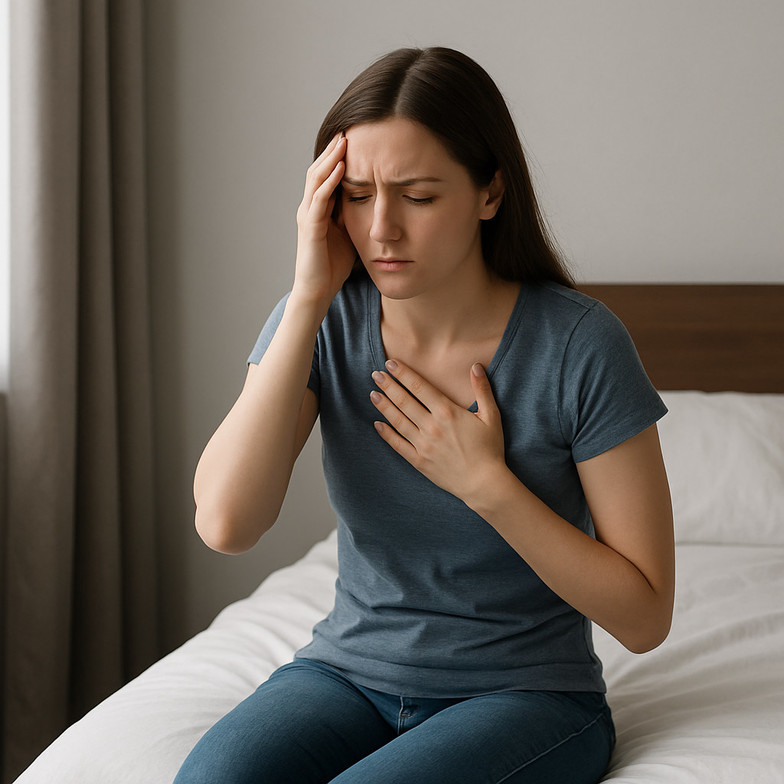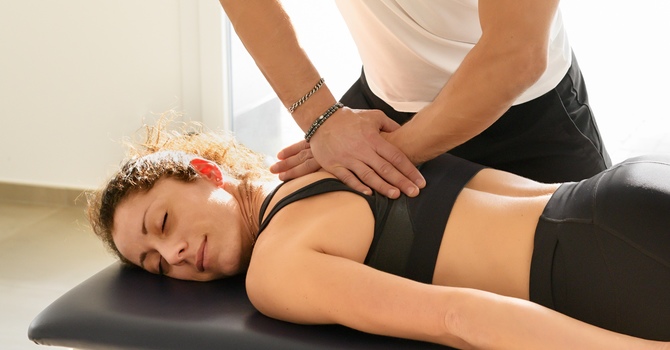
If you’ve asked yourself that question — or felt your heart race just from walking across the room — you’re not alone. And no, you’re not crazy.
You might be dealing with something called POTS, and chances are, nobody’s explained it in a way that makes sense.
Let’s change that.
What Is POTS?
POTS stands for Postural Orthostatic Tachycardia Syndrome. It’s a form of dysautonomia — which means dysfunction in the autonomic nervous system. That’s the part of your nervous system that regulates things like heart rate, blood pressure, digestion, and temperature control.
In POTS, your body struggles to adjust to changes in posture. When you go from lying down to standing, your heart rate jumps — often by more than 30 beats per minute — just to keep your blood pressure up. This overreaction can cause a range of symptoms that affect your whole body.
Common Symptoms of POTS
-
Fast heart rate when standing
-
Dizziness or lightheadedness
-
Fainting or near-fainting episodes
-
Fatigue
-
Brain fog
-
Nausea or GI upset
-
Cold hands and feet
-
Sensitivity to heat
-
Shortness of breath
-
Exercise intolerance
It’s Not Just Anxiety
One of the most frustrating parts of POTS is being told it’s all in your head.
Yes — anxiety can be a part of the picture. But that doesn’t mean it’s the cause.
In POTS, your nervous system is misfiring. Your body is doing what it thinks it needs to do to survive — but it’s stuck in overdrive. Understanding this distinction is critical. This is a physiological condition, not a psychological weakness.
What Causes POTS?
POTS can show up after:
-
Viral infections (including long COVID)
-
Concussions or traumatic brain injuries
-
Surgery or physical trauma
-
Autoimmune conditions
-
Prolonged periods of bed rest or deconditioning
It often affects women between the ages of 15 and 50, but anyone can develop it.
How Is POTS Diagnosed?
Diagnosis starts by observing how your heart rate and blood pressure respond to changes in position. Many online sources mention a “poor man’s tilt test” — a DIY version you can do at home.
But in our clinic, we use a professional tilt table test to safely and accurately assess your autonomic function. It’s the gold standard, and it gives us real data to guide your care — without guesswork.
How Do You Treat POTS?
There’s no one-size-fits-all fix, but there are many ways to feel better.
Lifestyle Support
-
Salt and fluid loading (under guidance)
-
Compression garments
-
Gentle, recumbent exercise (like rowing or recumbent biking)
-
Pacing and wearable heart rate monitoring
-
Prioritizing sleep, small meals, and body awareness
Clinical Strategies
-
Autonomic nervous system retraining
-
Vestibular and visual system rehab (especially post-concussion)
-
Functional neurological care to improve brain-body regulation
-
Collaboration with your medical team as needed
We focus on restoring regulation through neuroplasticity — helping your brain and body work together more efficiently again.
You’re Not Lazy. You’re Dysregulated.
Living with POTS can feel isolating, exhausting, and invisible. You may look fine to the outside world while your nervous system is in a daily tug-of-war behind the scenes.
But here’s the truth: You’re not broken. You’re not imagining it. And there is hope.
If you suspect POTS or have already been diagnosed but feel stuck, we’re here to help. With the right tools and the right support, you can take your life back — one beat at a time.
Want to Learn More?
We offer comprehensive autonomic evaluations using a tilt table and functional neurological exam tailored to your specific needs.
Book a consultation now --> https://inlandnwneuro.janeapp.com/

Benjamin Pupo
Contact Me



